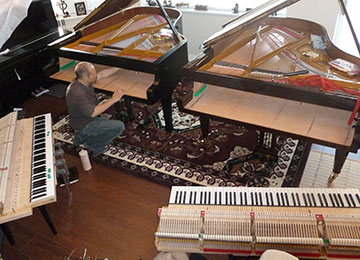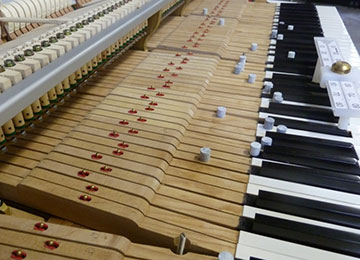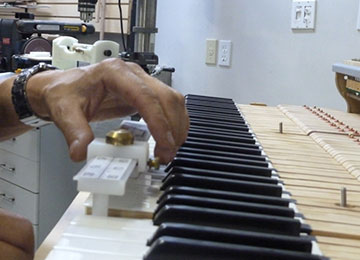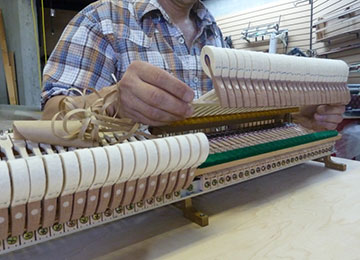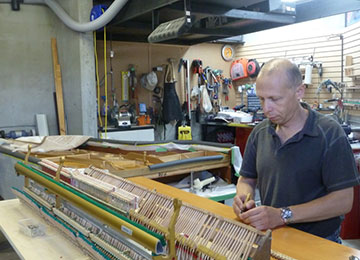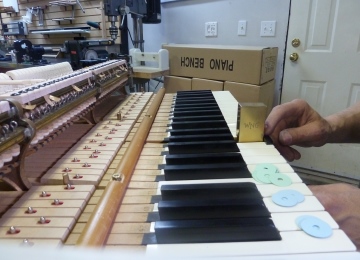Piano Regulating
The right touch, which depends on proper regulation, is an important part of the satisfaction and pleasure that your piano brings you. The average piano is constructed of about 9,000 parts. Regulating a piano involves the careful adjustment of these parts so each does exactly what it should at exactly the right time. Once a piano is regulated correctly, it is important to adjust the regulation as needed. Felt, cloth, and hammers become worn. Wooden parts warp a little, altering the relationship of one part to another. The stability of tuning and touch is highly dependent on daily and seasonal changes in humidity and temperature.
When the action is regulated correctly and the keys' weight is properly balanced, your performance is more effective. Good speed of playing depends particularly on the repetition of the keys. Repetition is the ability of the key to repeat the sound with minimal lifting of your finger. Grand pianos have full repetitions and give you the ability to play quickly and clearly. The upright pianos have the regular action, but with right regulation, a quicker touch might be achieved. The touch can be made lighter or heavier.
Some factory standards might be slightly modified according to the taste and habits of the player. Not all of the piano factories produce instruments that have a good sound and touch. Sometimes we can not afford to buy the piano we would like. It is my job to improve the tone and touch of your piano to make an inexpensive piano sound it's best.
